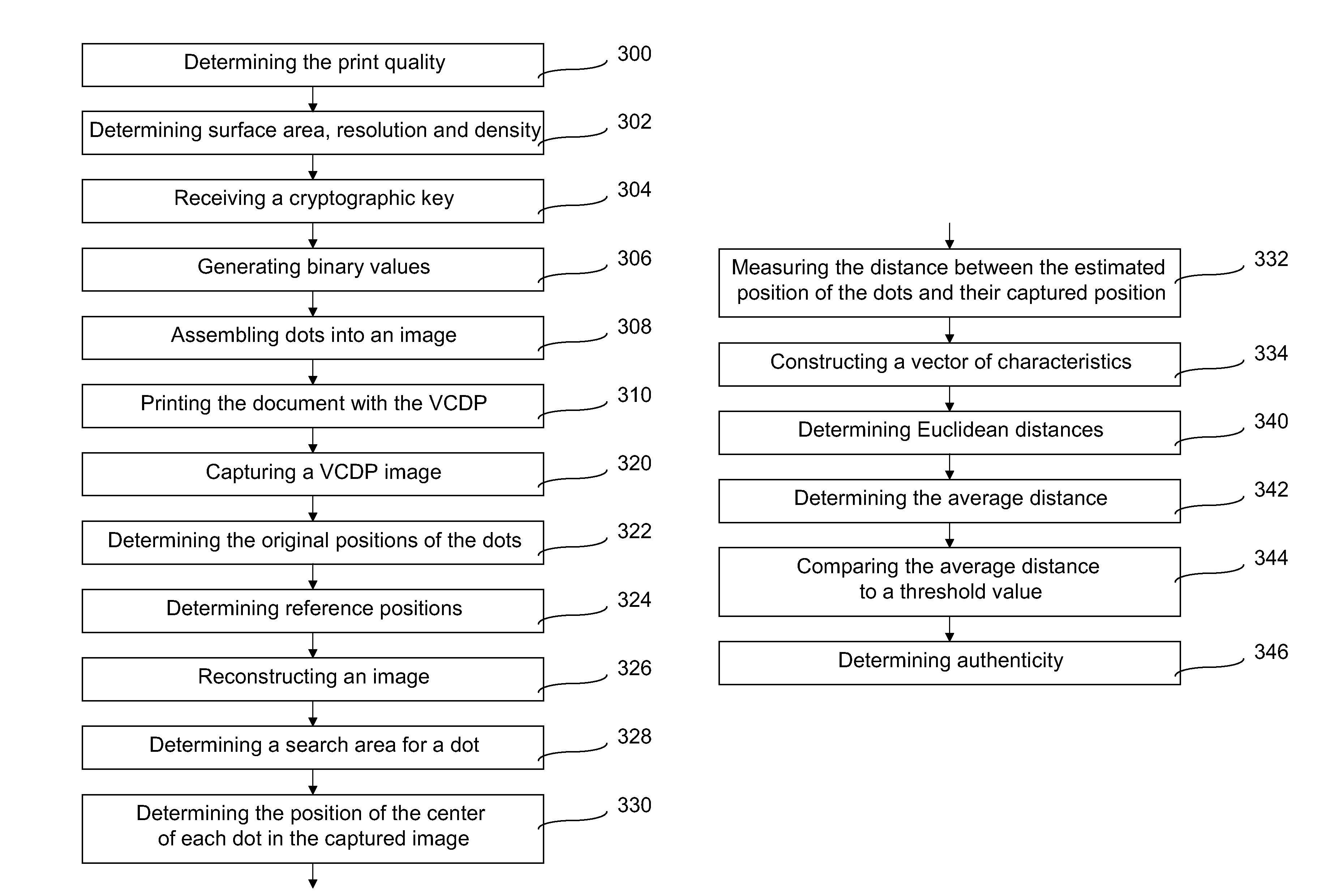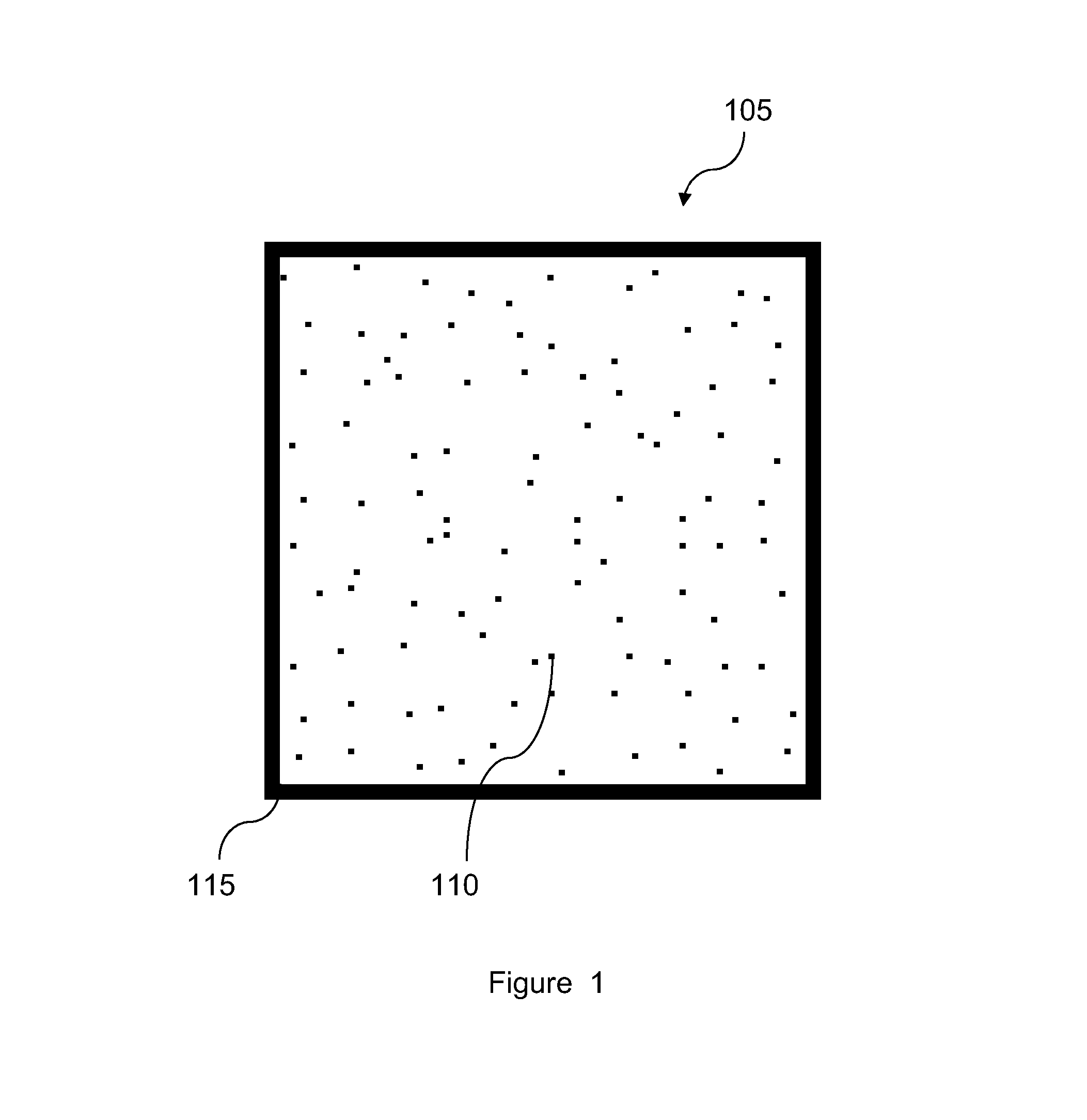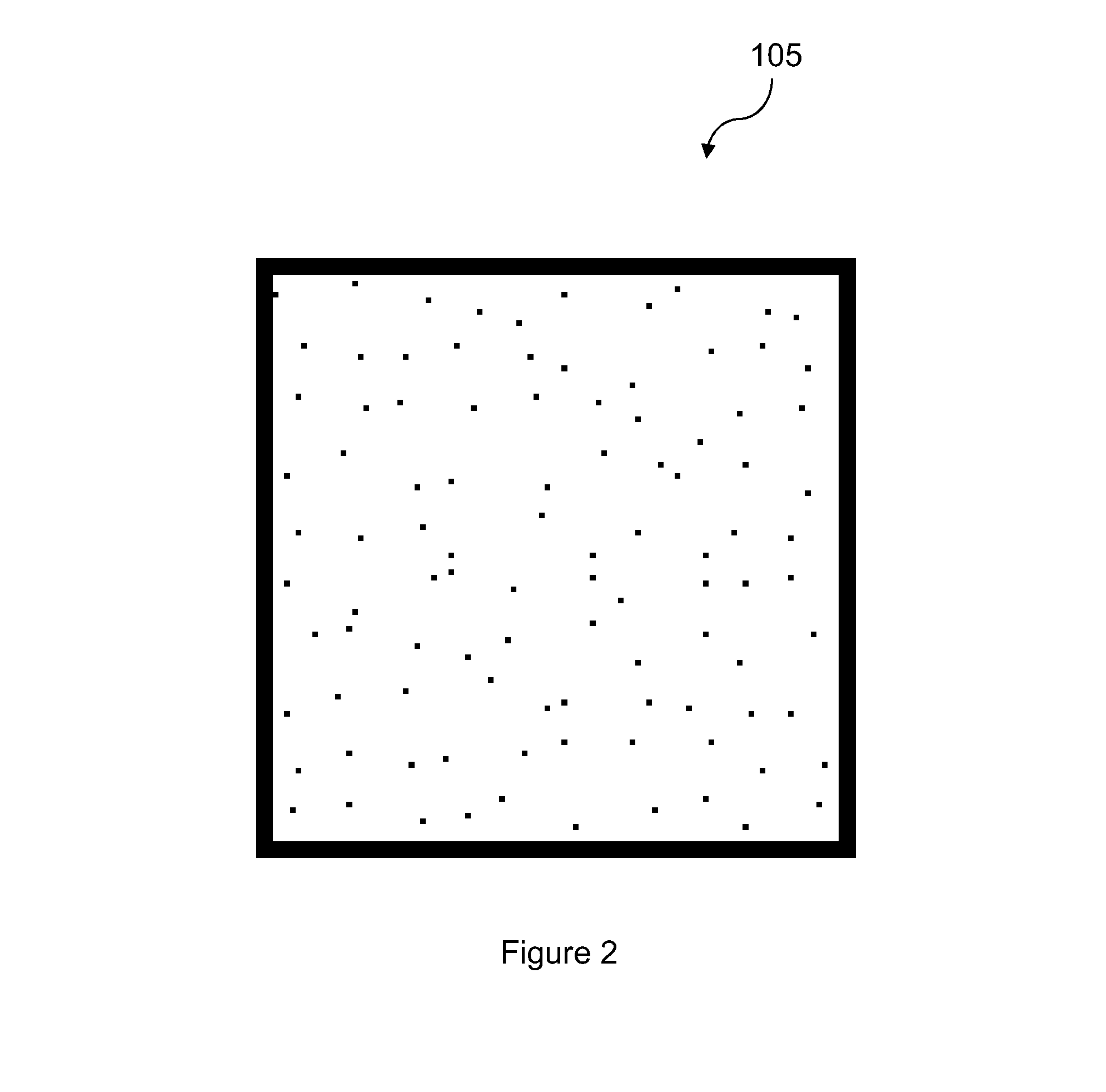Method and device for making documents secure using unique imprint derived from unique marking variations
a technology of unique imprints and documents, applied in the field of methods and devices, can solve the problems of sensitive copying of secure information matrices, and achieve the effects of easy integration, easy stabilization of digital watermark reading, and easy adjustment of the reading
- Summary
- Abstract
- Description
- Claims
- Application Information
AI Technical Summary
Benefits of technology
Problems solved by technology
Method used
Image
Examples
Embodiment Construction
[0139]Before giving the details of the various particular embodiments of this invention, the definitions that will be used in the description are given below.[0140]“information matrix”: this is a machine-readable physical representation of a message, generally affixed on a solid surface (unlike watermarks or digital watermarks, which modify the values of the pixels of a design to be printed). The information matrix definition encompasses, for example, 2D bar codes, one-dimensional bar codes and other less intrusive means of representing information, such as “Dataglyphs” (data marking);[0141]“document”: this is any (physical) object whatsoever bearing an information matrix;[0142]“marking” or “printing”: any process by which you go from a digital image (including an information matrix, a document, etc) to its representation in the real world, this representation generally being made on a surface: this includes, in a non-exclusive way, ink-jet, laser, offset and thermal printing, and a...
PUM
 Login to View More
Login to View More Abstract
Description
Claims
Application Information
 Login to View More
Login to View More - R&D
- Intellectual Property
- Life Sciences
- Materials
- Tech Scout
- Unparalleled Data Quality
- Higher Quality Content
- 60% Fewer Hallucinations
Browse by: Latest US Patents, China's latest patents, Technical Efficacy Thesaurus, Application Domain, Technology Topic, Popular Technical Reports.
© 2025 PatSnap. All rights reserved.Legal|Privacy policy|Modern Slavery Act Transparency Statement|Sitemap|About US| Contact US: help@patsnap.com



